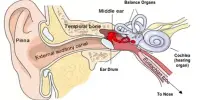According to research published in the online edition of Neurology, the official journal of the American Academy of Neurology, survivors of terror attacks had an increased risk of recurring migraine and tension headaches after the incident.
The participants in the research were adolescent survivors of Norway’s biggest mass murder. A lone shooter opened fire at a youth summer camp on Utya Island in 2011, killing 69 people and injuring 33 more. As they attempted to flee the island, all survivors faced dread, many lost friends, and some risked drowning.
Overuse of acute migraine medication, inadequate acute therapy, obesity, depression, and stressful life events are the most major modifiable risk factors for chronic migraine. Furthermore, the incidence of chronic migraine is increased by age, female sex, and poor educational position.
A single highly stressful event may lead to ongoing suffering with frequent migraines and other headaches, which can be disabling when they keep people from their work or school activities.
Synne Øien Stensland
“We know a lot about the psychological effects of terror attacks and other extreme violence on survivors, but we don’t know much about the physical effects of these violent incidents,” said study author Synne Øien Stensland, MD, PhD, of the Norwegian Centre for Violence and Traumatic Stress Studies in Oslo.
“Our study shows that a single highly stressful event may lead to ongoing suffering with frequent migraines and other headaches, which can be disabling when they keep people from their work or school activities.”
The study’s 358 teenage survivors were asked to take part. The average age of the 213 participants was 18, and 6% were badly injured in the incident.
Four to five months after the incident, participants were asked about their headache frequency. Their headache kind and frequency reactions were compared to those of 1,704 young people of the same sex and age who had not been terrified.
Teens who had been exposed to horror were four times more likely than those who had not been exposed to terror to suffer from migraines and three times more likely to suffer from recurrent tension headaches.
After correcting for injuries, sex, past exposure to physical or sexual assault, and psychological distress, the results remained the same. Recurrent headaches were reported by 80 of the 109 female participants who were exposed to terror, or 73 percent, compared to 325 of the 872 who were not exposed, or 37 percent.
In the male participants, 43 of the 104 terror survivors (41%) developed headaches, compared to 158 of the 832 who had no exposure (19%). Those who had been exposed to the trauma were substantially more likely to experience daily or weekly headaches than those who had not.
“We suspected that headaches would increase for terror survivors, and the increase was over and above what might be expected based on psychological distress and other risk factors,” said Stensland.
“This suggests that we may need to figure out ways to help people right after events like terror attacks to help reduce the potential of frequent and disabling headaches. In many cases with severe headaches, treatments can be most helpful early on before the condition becomes chronic.”
The etiology of migraine chronification may be viewed as a threshold issue: certain predisposing variables, when paired with regular headache pain, reduce the migraine attack threshold, increasing the chance of chronic migraine. One research weakness was that survivors with high symptom levels had a lower response rate, which might have led to an underestimating of risk.
















